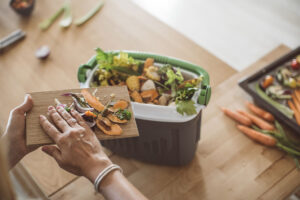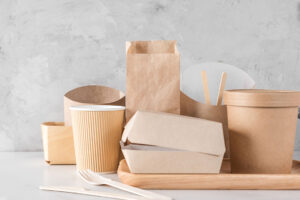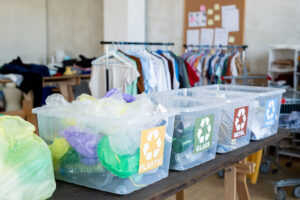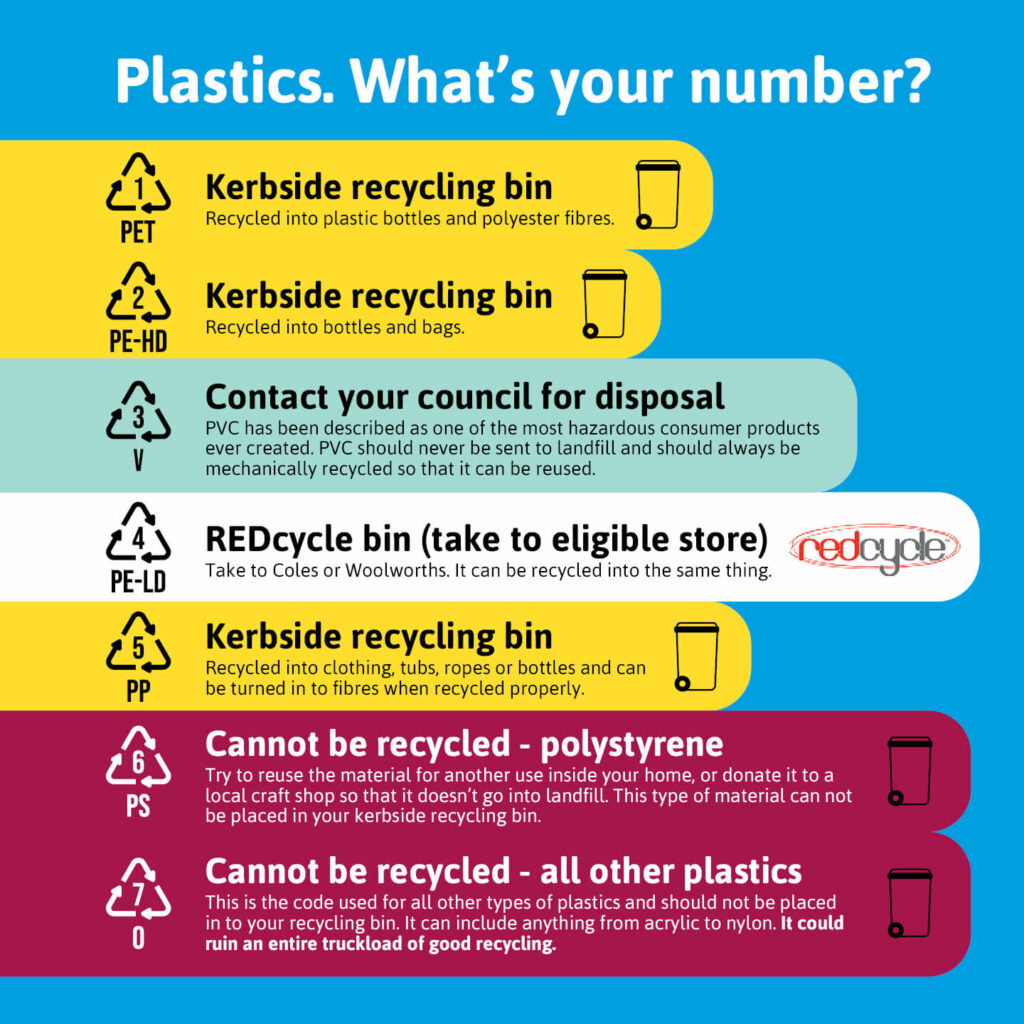Four ways to be more environmentally conscious at home in WA and away.
Most of us want to make our world that little bit better for our families, kids, and grandkids, but sometimes it’s hard to know what that ‘part’ should be and what actions we might take.
If we take notice of our household and our consumer habits a bit more, we can make a difference at home as well as in the wider community.
If you’re in Perth, you can access much of the below, but even in regional or remote WA, there are many ways to be more environmentally savvy from your day-to-day to ordering online.
Here are four ways we can tackle some key environmental issues affecting our backyards here and around the world.
1. Food waste to zero waste.
Sad fact: According to Food Bag, in Australia approximately 1/3 of all food goes to waste and up to 40% of household bins is food waste. This equates to around $20 billion worth of wasted funds to grow and produce the food, as well as additional greenhouse gas emissions, water wastage, and extra landfill.
Food Bag is an initiative originating in Europe to help reduce food waste and save you money at the same time.
Download the smartphone app via the Apple store or Android Google Play, and you’ll find a bunch of local businesses, predominantly bakeries and patisseries, who’ll sell their perfectly good food for far less, so that it doesn’t go to waste at the end of the day.
If you’re a local business you can sign up to sell your surplus goods via Foody Bag for free. Simply download the load the app and become a Hero of Food Waste.
Consider composting so that any kitchen scraps and any leftover food past its used-by date can feed your garden.
Setting up a compost bin is actually very easy, usually just three key steps. Check with your local council for any subsidies offered for compost bins or community workshops that are run to help you get started. If you don’t have time or space for a compost bin (or garden), community compost hubs are a convenient option.
ShareWaste is a great source to rely on for finding a local compost heap, chicken coups or worm farms that love kitchen scraps, community gardens or farms, and cafes or businesses that offer coffee grounds or waste to collect. You’re likely to find a few options online through Facebook groups in your area, such as the Community Composting Station located in the City of Vincent.
While composting is a great solution for food scraps, why not start by looking for ways to cut back on food waste in the kitchen?
2. Recycling programs.
We’re starting to see an uplift in communities taking more action in protecting our environment.
The City of Canning offers collection points for recycling face masks, light bulbs, batteries, small e-waste, printer cartridges, and aerosols.
Officeworks has also expanded their recycling program to include an e-waste collection point, which accepts printer cartridges, mobiles, batteries, and pens.
Blooms The Chemist encourages shoppers to drop off empty medication blisters, or tablet packaging and foils as well as empty vitamin bottles so that they can recycle them.
Sometimes they have special savings for in-store purchases with each drop-off. Find Blooms The Chemist on their social channels to learn more.
Little Aussie Communities are making an impact locally, providing a reliable source of information to connect businesses and community groups with residents in their local area.
They do great work with tips on reducing waste, reusing items, and recycling. Subscribe to their newsletter for more information tailored to your neighbourhood. ![]()
RED Group launched the REDcycle Program which focuses on collecting the soft plastics that cover much of our produce and products in grocery stores including Coles and Woolworths.
The goal is to reclaim the plastic bags and soft plastic packaging from landfill. Keep an eye out for the REDcycle collection points at your local grocery store.
If you need more guidance, here are eight easy ways your household can reuse and recycle more every day.
3. Declutter pre-loved goods by swapping, selling, or donating, not throwing them away.
Save your unwanted goods from landfill and consider selling, swapping, or donating them. Start your ethical declutter with these suggestions.
A lot of community groups and more clothing companies are moving towards recycling programs and initiatives. So keep these in mind as an alternative to the bulk waste pick-ups or during your next spring clean.
While a lot of us are happy to donate to local op-shops, we need to make sure we’re dropping off goods that are both clean, and in great condition.
Good Sammy launched the GREAT Sorts campaign in 2019 stressing the importance of reducing waste in stores where they can’t mend or wash items donated.
Brands closing the loop.
In this fast-fashion world, landfill is booming. Thousands of tonnes of clothing items and accessories are discarded, either unsold or by shoppers who’ve moved onto the newest fashion items.
Less than 1% of the materials used to make clothes get recycled each year. That’s according to H&M’s Close The Loop initiative focusing on recycling and repairing pre-loved garments. H&M offers a 15% off H&M voucher for shoppers who drop off unwanted clothing to their H&M garment collecting boxes.
Good fact: In 2020, H&M collected 18, 800 tonnes of unwanted clothes and textiles through the Garment Collecting programme. That’s the equivalent of 94 million T-shirts.
Sheridan claims to be the first of Australia’s homewares brands to make an effort to find a solution to the textile industry’s waste problem.
Good fact: Since launching their return, recycle, renew initiative in 2019, they’ve collected over 62, 000 kg’s of pre-loved linen and towels. Learn more about how shoppers can recycle pre-loved items via the Sheridan Recycling Program and save 5% off their next purchase.
4. Packaging – how to know what it is and what to do with it.
A lot of what we purchase comes in packaging. On almost every item, icons, codes, and acronyms are printed or embedded into the packaging. But what does it all mean?
The handy infographic below describes what these typical symbols mean and how to know where to dispose of items properly.
If you’re still unsure, Urban Revolution also offers a how-to guide to recycling.
Ecobin.com.au helps explain how to understand recycling codes, and has extra tips and suggestions on zero-waste eating.
We’re doing our bit here at Kleenheat too.
Kleenheat is committed to a healthy, safe and sustainable future for all. That’s why we’re continuing to make changes to our business practices to reduce our footprint in line with our long-term sustainability plan.
One of our solutions is introducing the option for our customers to opt-in to offset their household natural gas usage.
Together, we can take action locally for a greater cause – learn more about opting in to offset with Kleenheat.
